5 Stages of Child Development: From Infancy to Early School Years
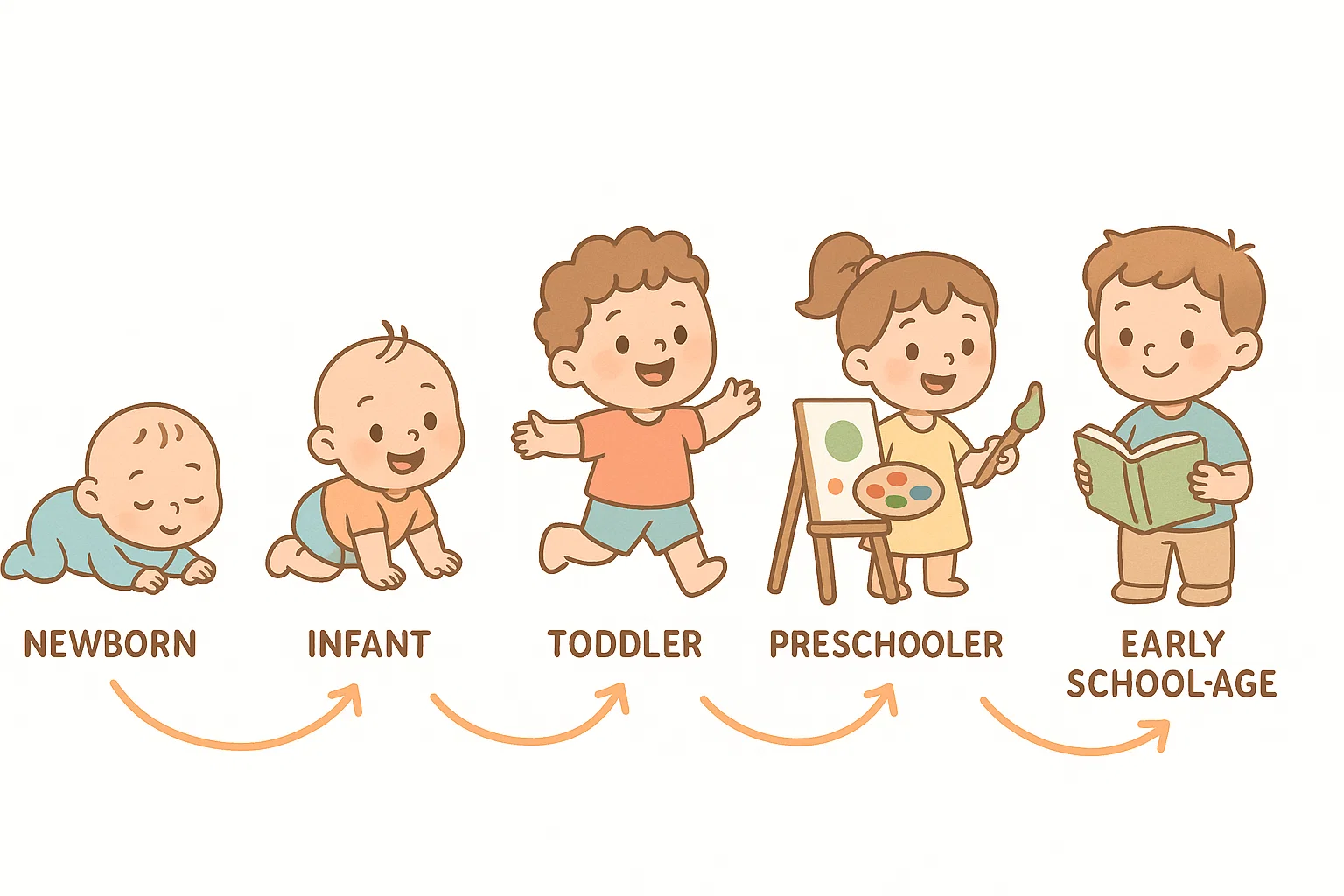
Human development is a continuous journey that unfolds through a series of distinct stages. From birth through early childhood, each phase marks a predictable yet unique progression across physical, cognitive, social, and emotional growth. Like climbing a staircase, every step builds on the last, forming a strong foundation for future learning.
This article explores the five key stages of child development from birth to age five, offering a clear guide to understanding and supporting growth during these crucial early years. It also draws a parallel with the five stages of group development, showing how this natural progression shapes teamwork and learning at every stage of life.
Key Concepts of Developmental Stages
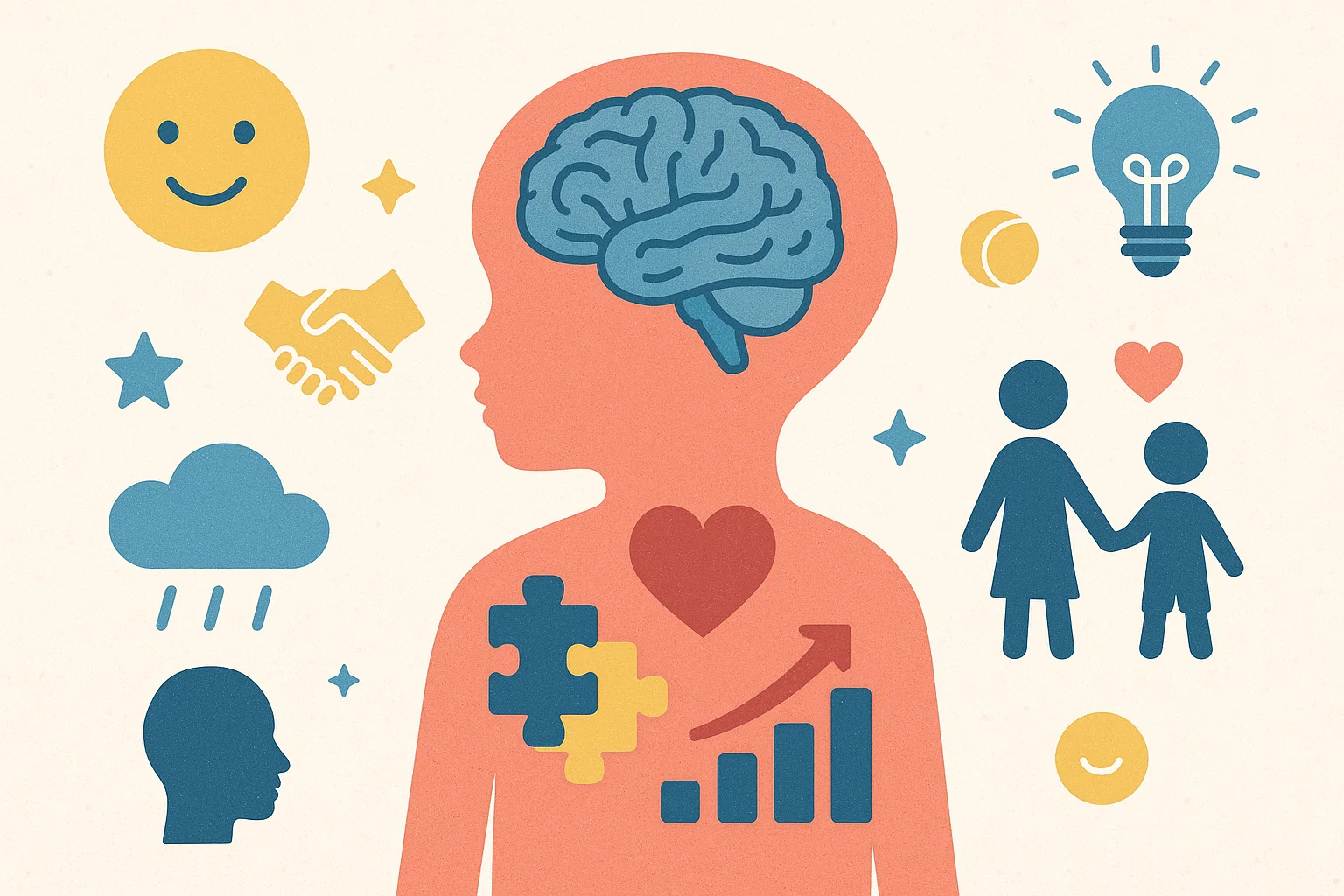
Developmental milestones are functional skills or specific achievements observed during a child’s growth. They serve as guideposts, signaling when a child learns key abilities such as rolling over, walking, or talking.
Biological and Psychological Foundations
The blueprint for your child’s journey is complex, built on the interplay between genetics, environment, and early experiences.
- Genetics: Heredity sets the potential range for things like height, temperament, and certain cognitive abilities.
- Early Experiences: The sheer volume and quality of a child’s early experiences dramatically shape brain development. Positive, nurturing interactions stimulate neural pathways, leading to robust skill formation.
- Environment: A stimulating, safe, and loving environment is essential for optimal development. This includes emotional security, proper nutrition, and exposure to rich language and learning opportunities.
Factors Influencing Progress
While the sequence of developmental milestone acquisition is similar for most children, the rate at which a child grows and acquires new skills varies. Several factors influence this progress:
| Factor | Influence on Development |
| Nutrition | Crucial for physical and brain development; lack of proper intake can lead to a developmental delay. |
| Emotional Security | Stable, predictable, and loving relationships with caregivers support emotional development and the ability to explore the world with confidence. |
| Physical Health | Regular check-ups and freedom from illness ensure energy is available for learning and activity, supporting gross motor and fine motor skills. |
| Education & Stimulation | Access to play, books, and language rich environments enhances their cognitive development. |
| Social Context | Interaction with peers and diverse individuals helps a child develop essential social skills |
Cognitive and Emotional Growth
A child’s development is holistic. Mental abilities, or cognitive development, like problem-solving and memory, advance in tandem with emotional development, such as the ability to recognize, express, and manage feelings. For example, a toddler mastering object permanence (a cognitive skill) may also show signs of separation anxiety (an emotional response), demonstrating how these two domains are linked.
Stage 1 – Newborn (0–3 Months)
The newborn phase, often called infancy, is a time of rapid transition from the womb to the outside world. This stage is dominated by survival reflexes and the critical process of forming a foundational bond with caregivers. The primary developmental needs are security and physical comfort.
Physical Development
A newborn’s movements are largely controlled by primitive reflexes, not conscious action.
- Motor Reflexes: The rooting, sucking, Moro (startle), and grasping reflexes are prominent.
- Head Control: The baby is learning to lift their head briefly when on their tummy, an early gross motor skill.
- Sensory Awareness: Vision is blurry but sharpens quickly. They recognize familiar voices and scents.
Emotional and Social Beginnings
Bonding is the key psychological task of this stage. Crying is the newborn’s most powerful tool for communication.
- Attachment: Responding consistently to your baby’s cries builds a sense of trust and security, laying the groundwork for a secure attachment.
- First Emotional Responses: The first recognizable social smile, usually around 6-12 weeks, is a monumental developmental milestone.
Ways to Support Development
Simple, consistent actions have the most profound impact during this early stage.
- Physical Contact: Skin-to-skin contact is immensely soothing and regulates the baby’s heart rate and breathing.
- Responding to Cries: You can’t ‘spoil’ a newborn by responding to their cries—you’re teaching them that the world is safe and responsive.
- Creating Secure Routines: Predictable feeding, sleeping, and playtime help the infant feel safe and regulated.
Stage 2 – Infant (3–12 Months)
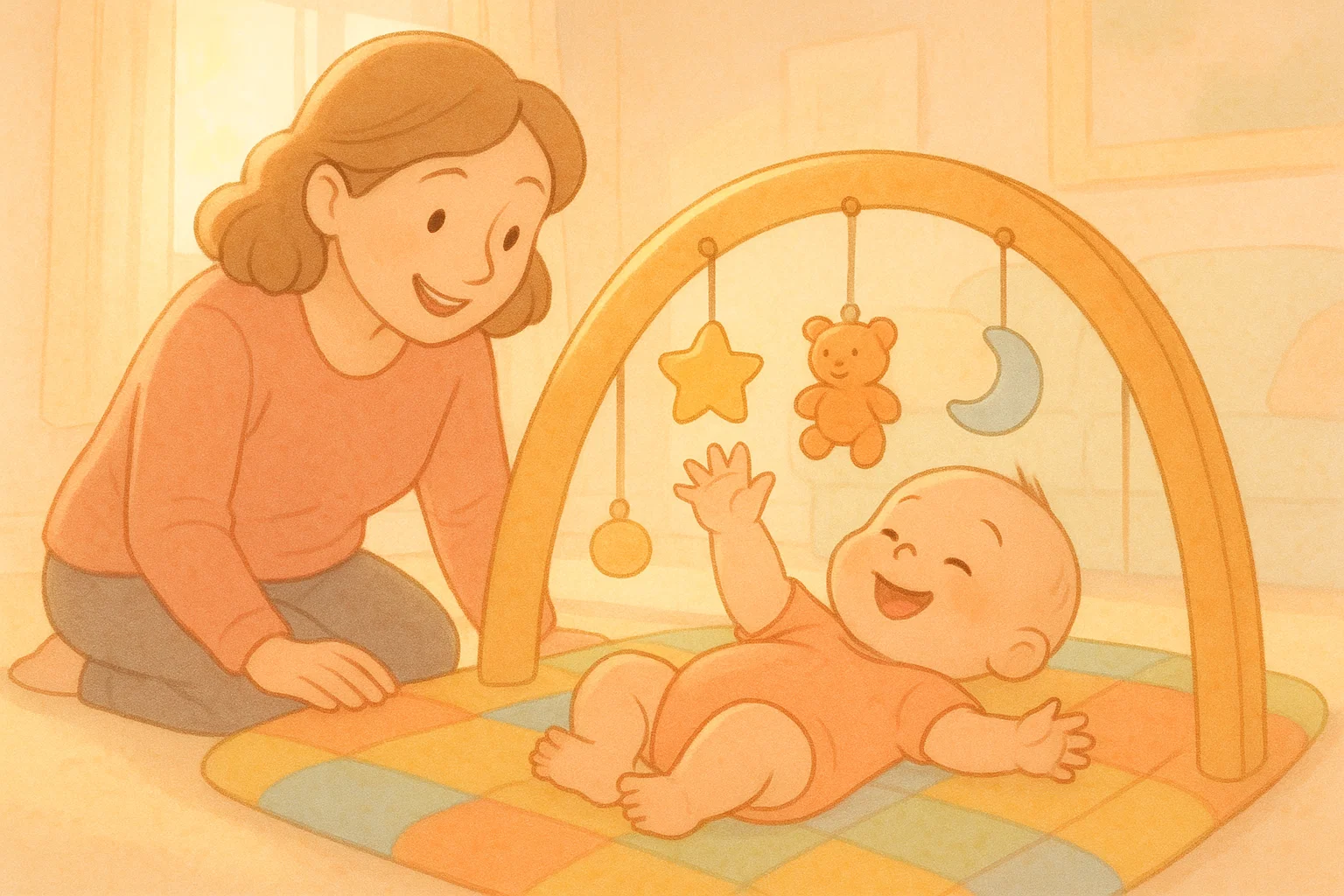
The infant stage is marked by a dramatic increase in mobility, curiosity, and interaction. The child is no longer a passive recipient of care; they are beginning to actively explore and influence their environment. They constantly test and learn about cause and effect.
Cognitive Milestones
The world is opening up, and the infant is making critical mental connections.
- Object Permanence: Around 8-12 months, the baby grasps that an object continues to exist even when they can’t see it (Piaget’s classic theory). This is a crucial cognitive step.
- Memory Formation: They begin to recognize familiar faces, toys, and patterns.
- Cause-Effect Awareness: Shaking a rattle makes a sound; dropping a spoon gets a reaction. This is fundamental learning.
Language Development
This is the explosion of pre-speech communication.
- Cooing and Babbling: Vowel sounds (cooing) give way to consonant-vowel combinations (babbling) like ‘mama’ and ‘dada’—which are often not yet tied to meaning.
- First Attempts to Imitate: The baby practices taking turns in “conversation,” imitating facial expressions and simple sounds.
- Gestures: They begin to use pointing and waving to communicate needs and interests.
Parental Support Strategies
The best way to support your little one’s rapid early development is through rich interaction.
- Talk, Talk, Talk: Narrate your day. Research suggests that the sheer volume of words a child hears in the first five years significantly impacts their vocabulary and language skills.
- Sensory Play: Provide varied textures, sounds, and safe objects for handling to enhance sensory processing and fine motor skills.
- Floor Time: Maximize supervised floor time to allow for the practice of rolling, sitting, and creeping, which strengthens gross motor development.
Stage 3 – Toddler (1–3 Years)
Welcome to the toddler years, a period defined by the quest for independence, or “autonomy versus shame and doubt,” as Erik Erikson described this age range. The toddler years are famous for constant ‘No!’s and a growing sense of self-awareness.
Physical and Motor Progress
Walking opens up a whole new world for exploration.
- Balance and Coordination: They move from wobbly walking to running, climbing, and kicking a ball. This rapid gross motor mastery fuels their independence.
- Fine Motor Development: They start using utensils, stacking blocks, and scribbling with crayons, developing the precise control of fine motor skills.
Social-Emotional Growth
The toddler years are a paradox—an intense desire for independence coupled with a deep need for secure attachment.
- Self-Identity: They begin to understand they are separate individuals. Pronouns like “I,” “me,” and “mine” become common.
- Tantrums: Emotional development often outpaces a toddler’s ability to communicate or cope, leading to frustration and the infamous tantrum. This is a normal part of development.
- Beginning Empathy: They may start to notice when another child is sad and attempt to comfort them, showing early social skills.
Encouraging Positive Development
You are the secure base from which your child learns to launch themselves into the world.
- Structured Play: Provide toys and activities that allow them to practice their burgeoning motor development, such as ride-on toys or simple puzzles.
- Naming Emotions: Help them articulate their feelings. Say, “I see you are frustrated because the blocks fell down.” This helps them connect feelings to language.
- Consistent Routines: Predictability helps this age group feel in control and secure, reducing anxiety and outbursts.
Stage 4 – Preschool (3–4 Years)
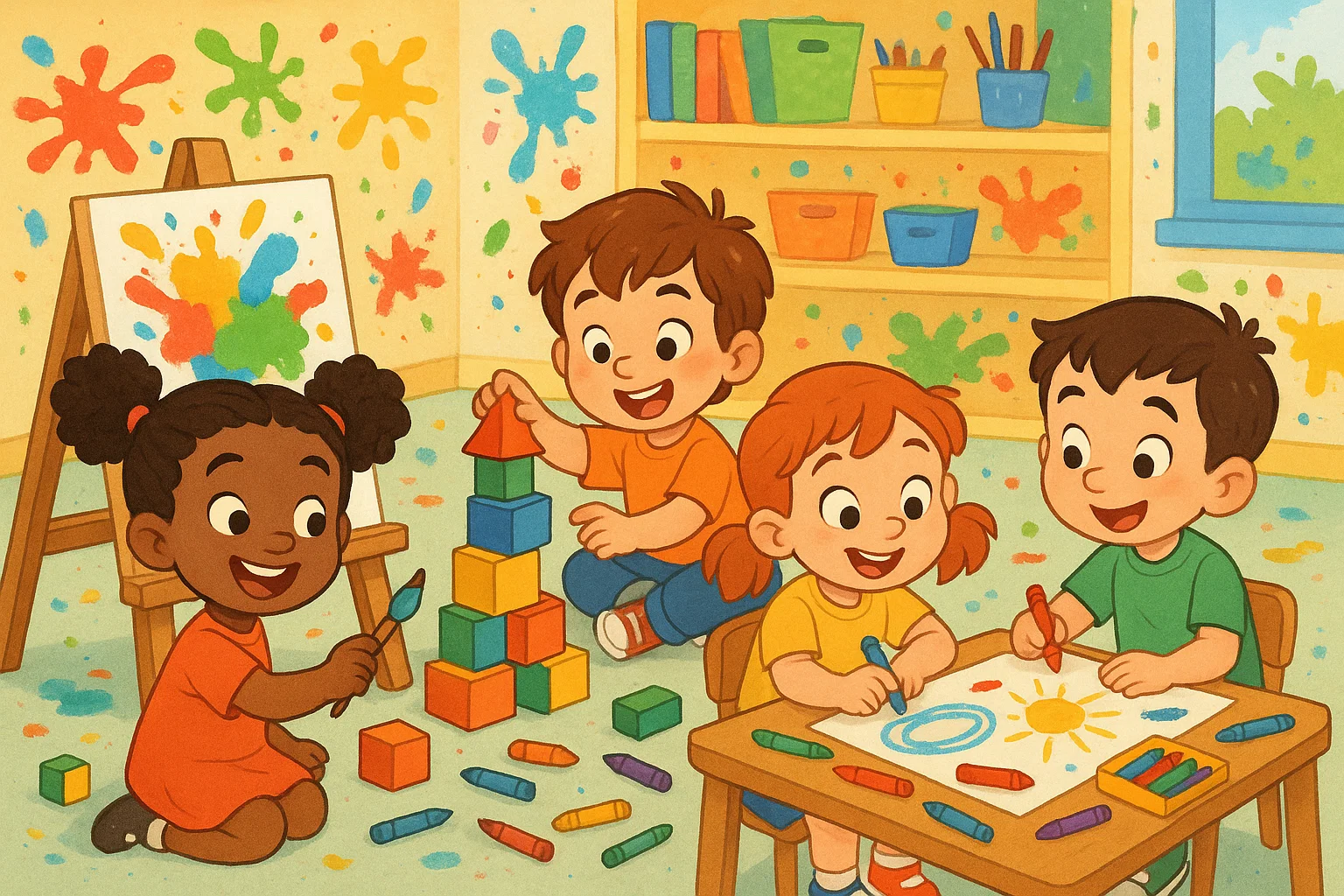
The preschool years are characterized by an explosion of imagination, a dramatic expansion of language development, and an increased ability to interact with peers.
Creative and Cognitive Skills
This is the “magical thinking” stage, where the lines between fantasy and reality can blur delightfully.
- Storytelling and Pretend Play: Imagination takes flight, often involving imaginary friends and complex narratives. Pretend play is vital for practicing social skills and problem-solving.
- Logical Thinking Foundations: They begin to understand simple time concepts (e.g., “before” and “after”) and follow multi-step directions. This enhances their cognitive development.
Emotional and Social Relationships
The focus shifts from parallel play (playing side-by-side) to cooperative play.
- Cooperation and Sharing: With guidance, they begin to negotiate, share toys, and work together on a common activity.
- Confidence in Group Settings: Their interactions with others refine their social skills and help them build self-confidence.
Home and Learning Support
Your role is to foster curiosity and provide opportunities for self-expression.
- Foster Creativity: Provide art supplies (crayons, paint, glue) and encourage dramatic play with dress-up clothes.
- Early Learning: Engage in activities that promote pre-literacy, such as reading rhyming books and discussing the pictures, as well as simple counting games.
- Positive Communication: Encourage your child to develop their conversational skills by asking open-ended questions (questions that require more than a yes/no answer).
Stage 5 – School Age (4–5 Years)
This stage, on the cusp of formal schooling, centers on self-regulation, purpose, and developing the crucial skills needed for academic success. This transition prepares the child for the school-age stages.
Academic Readiness
The focus and attention span required for classroom learning begin to solidify.
- Pre-Literacy and Numeracy: They may recognize letters, write their name, count objects accurately, and understand basic addition/subtraction.
- Curiosity and Structured Learning: They show an ability to sit still for longer periods for structured activities and ask increasingly complex “why” questions.
Emotional Regulation
The ability to manage strong feelings without acting out is a hallmark of this stage.
- Coping with Frustration: They start to use words to express anger or disappointment, rather than relying solely on physical outbursts.
- Building Self-Esteem: Success in new activities (like riding a bike or completing a task) boosts their confidence and sense of competence.
Encouraging Independence
The balance here is between protection and promoting autonomy.
- Balance Support with Autonomy: Encourage them to dress themselves, tidy up their toys, and help with simple household chores. This fosters responsibility.
- Social Adaptability: Organize playdates to practice social skills like conflict resolution and negotiation, which are essential for school life.
When Development Milestones Are Delayed
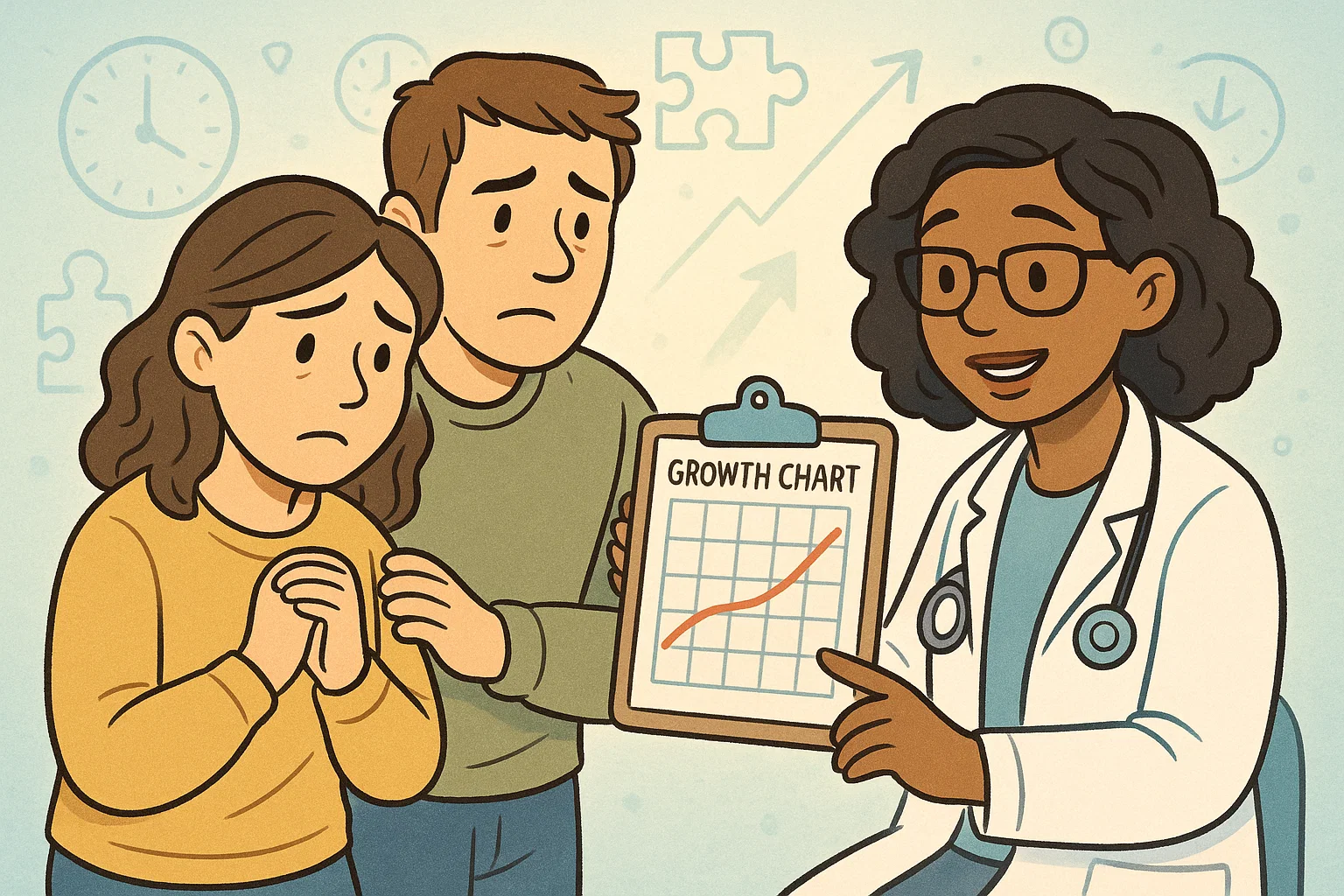
Most children acquire developmental milestones within an expected timeframe, but sometimes a child may not reach a particular skill, such as crawling or speaking, when expected. Developmental delays can stem from various factors—from medical conditions to environmental stressors. It is crucial to remember that a slight delay in one area does not automatically signal a problem, but consistent, multiple delays warrant investigation. Early identification and early intervention are the most effective ways to support a child’s progress.
Early Signs of Delay
As a caregiver, you are the expert on your child. Trust your instincts if something feels consistently “off.”
| Age Range | Potential Sign of Delay | Area of Development |
| Infancy (0–12 months) | Lack of response to loud sounds; poor eye contact; inability to sit by 9 months. | Sensory, Social, Gross Motor |
| Toddler (1–3 years) | Not speaking any recognizable words by age 2; inability to walk by 18 months; loss of previously learned social skills or language. | Language development, Motor development, Social-Emotional |
| Preschool (3–5 years) | Difficulty dressing or feeding self; inability to understand simple instructions; consistent difficulty interacting with peers. | Fine motor skills, Cognitive development, Social |
Intervention and Support
The sooner a potential issue is addressed, the better the outcome—early action supports healthy development.
- Pediatric Checkups: Use your child’s well-child visits, which often include developmental screening at specific ages and stages, to discuss any concerns with your healthcare provider.
- Early Education: Programs like Head Start or specialized early intervention services can provide therapy, support, and a structured learning environment tailored to the child’s developmental needs.
- Tailored Care: In the case of developmental disorders (such as Autism Spectrum Disorder or Attention-Deficit/Hyperactivity Disorder), a team approach involving therapists, educators, and family is essential for providing comprehensive support.
Parallel Concept – 5 Stages of Group Development (Tuckman’s Model)
While this article focuses on the child’s growth, it is fascinating to see how the concept of five stages also applies to the evolution of teams and working groups, as described by psychologist Bruce Tuckman. He proposed that successful teams move through a sequence of stages to achieve performance. Just as a child must master crawling before walking, a team must navigate conflict before achieving synergy.
Forming
This is the “newborn” stage of a group. Members are polite, and roles are unclear. The focus is on setting ground rules and understanding the task.
Storming
Like the toddler asserting independence, group members begin to assert their ideas, leading to conflict, power struggles, and differences of opinion. This is a necessary stage for developing trust and clear processes.
Norming
The team develops cohesion, trust, and shared understanding, much like the preschooler learning to cooperate. They agree on processes and develop a common culture.
Performing
This is the “school-age” stage of the team. The group is highly productive, synergistic, and capable of functioning autonomously. They are focused on achieving goals efficiently.
Adjourning
The team disbands or transitions to a new project, reflecting on their achievements and lessons learned.
Role of Environment and Culture in Development
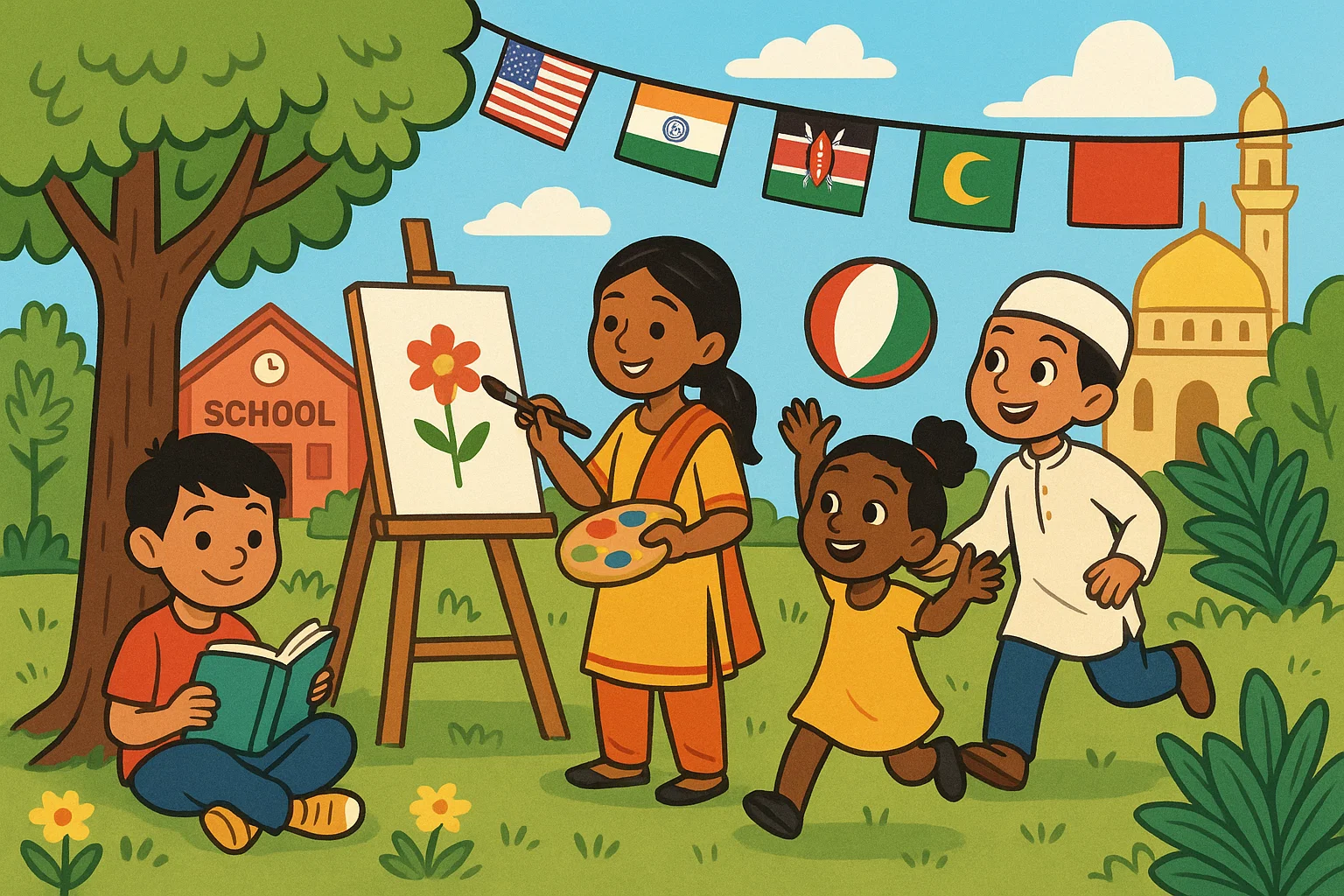
No child develops in a vacuum. The environment—family, school, community, and culture—acts as a powerful sculptor of a child’s potential. Understanding this context helps us better support children everywhere.
Influence of Cultural Context
Cultural beliefs profoundly influence how, when, and where a child acquires a developmental milestone.
- For instance, in some cultures, intense face-to-face interaction is valued; in others, observation is prioritized. Neither is inherently better; both lead to different, but equally valid, pathways for social development.
- The timing of gross motor development, like walking, can be influenced by cultural practices, such as how long infants are carried versus given floor time.
Community and Social Networks
A supportive community acts as an extended caregiver network.
- Peer Interaction: Playgrounds and daycare settings provide a crucial training ground where children practice social skills like negotiation and taking turns.
- Community Support: Access to quality healthcare, safe public spaces, and strong schools provides the foundation every child needs to reach their full potential.
Promoting Healthy Growth and Learning
Supporting development is an ongoing job that requires a holistic approach, focusing on the child’s whole being—mind, body, and emotions.
Daily Habits for Balanced Development
Consistency in key areas creates a stable platform for learning and growth.
- Prioritize Sleep: Adequate, high-quality sleep is non-negotiable for brain development and emotional regulation.
- Ensure Good Nutrition: A balanced diet provides the fuel necessary for a child’s rapid growth and cognitive function.
- Encourage Play: Play is the primary way children learn—it’s not a luxury; it’s their essential work.
- Manage Screen Time: The American Academy of Pediatrics recommends limiting screen time (outside of video chatting) for children under age 5.
Collaboration Between Parents, Educators, and Caregivers
When all the adults in a child’s life are on the same page, the child benefits from stability and consistent expectations. This teamwork among adults ensures a stable developmental environment and makes it easier to spot and address any emerging developmental delay early on. The shared goal is to encourage development in every domain.
Summary of the Five Stages
The journey through the five stages of child development is a marvel of human nature. From the reflexive actions of infancy to the purposeful readiness of the school-age child at age 5 and before 8 years of age, each stage builds upon the last. Remember, the path of child development is a continuous process, and every child follows their own unique timeline.
| Stage Name | Age Range | Key Developmental Milestone(s) | Recommended Support Measures |
| Newborn | 0–3 Months | Reflexes, tracking objects, first social smile. | Skin-to-skin contact, consistent response to needs, tummy time. |
| Infant | 3–12 Months | Sitting up, babbling, object permanence, crawling or cruising. | Sensory play, talking to the child, ample floor time for motor development. |
| Toddler | 1–3 Years | Walking, first words, intense quest for independence, temper tantrums. | Naming emotions, offering choices, safety-proofing the environment for exploration. |
| Preschool | 3–4 Years | Elaborate pretend play, basic logical thinking, cooperating and sharing with peers. | Fostering creativity with art and stories, practicing social problem-solving. |
| School Age | 4–5 Years | Fine motor control (writing/cutting), emotional regulation, pre-academic skills. | Encouraging independence, reading and discussing books, providing opportunities for structured play. |
By focusing on a nurturing, responsive environment and celebrating the small, continuous victories of growth and development milestones, you’re providing the best possible support for your child’s journey.
